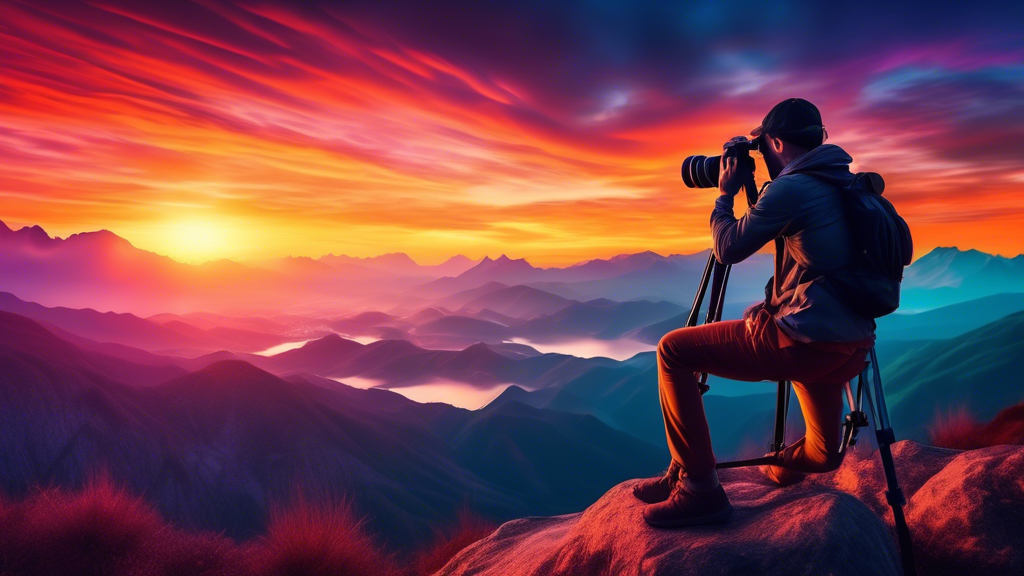Mastering Travel Photography: Capturing the World Through Your Lens
Travel photography is an incredibly rewarding genre, allowing you to document your adventures, share unique perspectives of the world, and even turn your passion into a profession. But capturing stunning travel photos that truly stand out takes more than just pointing and shooting. It requires a keen eye, technical know-how, and a passion for storytelling through images.
Essential Gear for the Traveling Photographer
While the best camera is the one you have with you, investing in quality gear can significantly elevate your travel photography. Here’s a basic kit to get you started:
- Camera: A DSLR or mirrorless camera offers greater control and image quality. Look for features like a good sensor size, interchangeable lenses, and manual settings.
- Lenses: A versatile zoom lens (e.g., 24-70mm) is ideal for various scenarios. Consider a wide-angle lens for landscapes and a prime lens (e.g., 50mm) for portraits and low-light situations.
- Tripod: Essential for low-light photography, long exposures, and achieving sharp images, especially in challenging lighting conditions.
- Filters: Polarizing filters reduce glare and enhance colors, while neutral density filters allow for wider apertures in bright light.
- Camera Bag: A comfortable and secure bag to protect your gear while on the move.
Mastering Composition: Framing Your Story
Composition is key to creating visually appealing and impactful photographs. Consider these fundamental rules:
- Rule of Thirds: Divide your frame into nine equal parts and place points of interest along the intersecting lines or at the intersections themselves for a more balanced and engaging composition.
- Leading Lines: Utilize natural lines like roads, rivers, or fences to guide the viewer’s eye through the image and towards the main subject.
- Symmetry and Patterns: Look for symmetrical scenes or repeating patterns to create a sense of harmony and visual interest.
- Framing: Use natural elements like trees, archways, or windows to frame your subject and add depth to the image.
- Negative Space: Don’t be afraid to embrace empty space around your subject to highlight its importance and create a sense of minimalism.
The Art of Storytelling: Conveying Emotion and Narrative
Travel photography is about capturing the essence of a place and its people. To tell compelling stories through your images:
- Capture the Moment: Anticipate and capture candid moments that convey genuine emotion and tell a story without words.
- Focus on Details: Pay attention to small details—a local’s expression, vibrant textures, unique architecture—that add authenticity and depth to your images.
- Embrace Different Perspectives: Experiment with angles and perspectives to present a fresh and engaging view of your subject.
- Include People in Your Shots: Human subjects add a sense of scale, emotion, and narrative to your travel photos. Interact with locals, capture their stories, and respect their culture.
Mastering Light: The Photographer’s Paintbrush
Light is the essence of photography. Understanding how to use light effectively can dramatically enhance your images:
- Golden Hour: Shoot during the hour after sunrise and the hour before sunset for warm, soft, and magical light.
- Blue Hour: Capture the serene beauty of the hour after sunset or before sunrise, characterized by cool blue tones.
- Diffused Light: Cloudy days provide soft, even light ideal for portraits and minimizing harsh shadows.
- Backlighting: Experiment with shooting into the light to create silhouettes, rim light, and dramatic effects.
Post-Processing: Enhancing Your Vision
Post-processing is an integral part of digital photography. Use editing software to enhance your images without manipulating the reality:
- Basic Adjustments: Adjust exposure, contrast, highlights, shadows, whites, and blacks to enhance the image’s overall look.
- Color Correction: Fine-tune white balance and color accuracy to reflect the scene’s true colors.
- Cropping and Straightening: Improve composition and correct any tilted horizons.
- Selective Editing: Use tools like brushes and gradients to make adjustments to specific areas of the image.
Turning Professional: Building Your Photography Business
If you aspire to become a professional travel photographer, consider these steps:
- Develop Your Style: Find your unique voice and vision to differentiate yourself in a competitive market.
- Build a Strong Portfolio: Showcase your best work that aligns with your chosen niche.
- Create an Online Presence: Establish a website and social media platforms to showcase your portfolio and connect with potential clients.
- Network and Collaborate: Attend photography workshops, travel conferences, and connect with other photographers and industry professionals.
- Market Your Services: Pitch your work to travel magazines, websites, tourism boards, and brands.
Conclusion: Embrace the Journey
Mastering travel photography is an ongoing journey of learning, exploration, and creativity. Embrace the process, experiment with different techniques, and never stop seeking new perspectives. Most importantly, remember to enjoy the adventure and let your passion shine through your photography. The world is your canvas—capture its beauty and share your unique stories through your lens.
